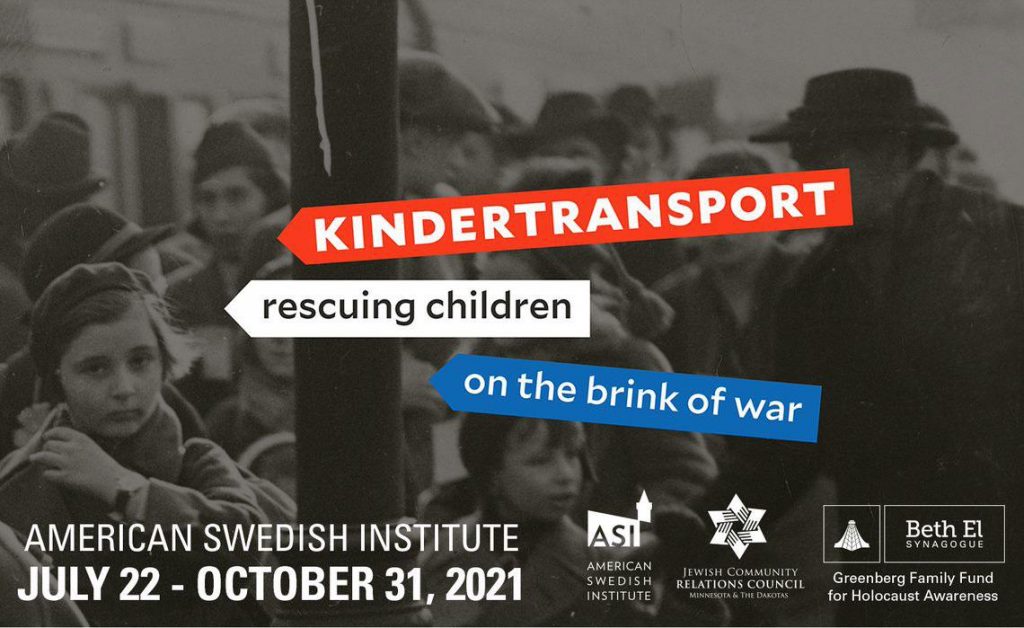The American Swedish Institute (ASI) current exhibit, “Rescuing Children on the Brink of War,” provides various accounts from those who, as children, were sent to various countries to escape Nazi persecution between late 1938 and September of 1939.
Originally a 2018 collaboration between the Yeshiva University Museum and Leo Baeck Institute (both located at the Center for Jewish History in Manhattan), the exhibition created an outpouring of public interest around the Kindertransport’s 80th anniversary and led to the donation of numerous items that have since ended up on companion sites.
Following “Kristallnacht” on November 9th, 1938, the Kindertransport, as it came to be known, relocated approximately 10,000 Jewish children from Nazi Germany (which, by late 1938 included Austria and the Sudetenland), Czechoslovakia, Danzig, and Poland. Most of the children arrived in Great Britain, which had the most open policies regarding refugee children. Sweden and other countries, with stricter quotas, still accepted a few hundred children until the outbreak of the war in September 1939. The Kindertransport is credited with saving the lives of approximately 10,000 children from what would have been certain death during the Holocaust. An estimated 1-1.5 million Jewish children were murdered by the Nazis and their collaborators.

Susie Greenberg, associate director of Holocaust education for the JCRC of Minnesota and the Dakotas said in an article for TC Jewfolk, “[The exhibit] was not meant to be a traveling show…We were researching ways to educate more about the Kindertransport. This was an amazing opportunity.”
Because the majority of the Kindertransport children never saw their parents again, it is clear from the letters and artifacts that many of the children were left traumatized — with accounts of painful family separations, harsh immigration policies, and abusive conditions once in countries like the UK — experiences that refugees are experiencing in similar ways all over the world today. It was thus not uncommon for survivors to remain silent about the trauma of child separation and the murder of their parents, and the exhibit points to survivors who rarely (if ever) spoke of this moment in their lives for decades.
The exhibition consists of the main display located on the ground floor, with additional items located in the Turnblad Mansion that highlight Minnesota Kindertransport survivors.
The array of items, the Minnesota connections made, and the exhibition design are its main strengths. A wall of blank tags spanning one entire wall of the exhibition space represents the identification documents the children wore around their necks. In addition, personal effects from the children, some of which have never been publicly exhibited before, include prayer books, school supplies, correspondence, and other items. This range of both conceptual art and artifacts speaks to the symbolic and interpretive role such objects play for the stories we impart — as fewer and fewer Kindertransport survivors remain alive.
The exhibition will remain open at ASI until October 31st, 2021.
Meyer Weinshel is a Ph.D. candidate in Germanic studies at the University of Minnesota Twin Cities, where he is the educational outreach and special collections coordinator for the UMN Center for Holocaust and Genocide Studies. In addition to being an instructor of German studies, he has also taught Yiddish coursework with Minneapolis-based Jewish Community Action and at the Ohio State University.

Comments